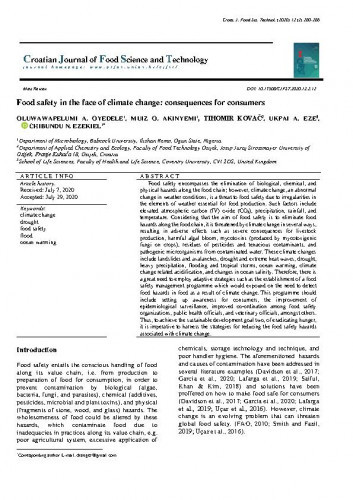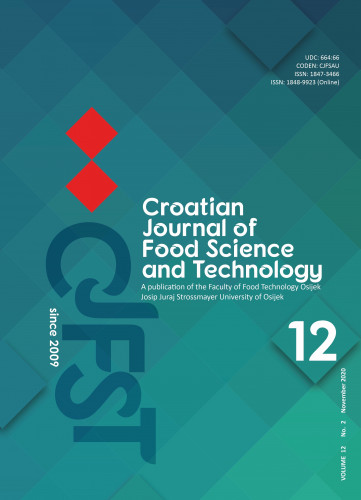Food safety encompasses the elimination of biological, chemical, and physical hazards along the food chain; however, climate change, an abnormal change in weather conditions, is a threat to food safety due to irregularities in the elements of weather essential for food production. Such factors include elevated atmospheric carbon (IV) oxide (CO2), precipitation, rainfall, and temperature. Considering that the aim of food safety is to eliminate food hazards along the food chain, it is threatened by climate change in several ways, resulting in adverse effects such as severe consequences for livestock production, harmful algal bloom, mycotoxins (produced by mycotoxigenic fungi on crops), residues of pesticides and tenacious contaminants, and pathogenic microorganisms from contaminated water. These climate changes include landslides and avalanches, drought and extreme heat waves, drought, heavy precipitation, flooding and tropical storms, ocean warming, climate change related acidification, and changes in ocean salinity. Therefore, there is a great need to employ adaptive strategies such as the establishment of a food safety management programme which would expound on the need to detect food hazards in food as a result of climate change. This programme should include setting up awareness for consumers, the improvement of epidemiological surveillance, improved co-ordination among food safety organizations, public health officials, and veterinary officials, amongst others. Thus, to achieve the sustainable development goal two, of eradicating hunger, it is imperative to harness the strategies for reducing the food safety hazards associated with climate change.
Sažetak

 Croatian journal of food science and technology : a publication of the Faculty of Food Technology Osijek : 12,2(2020) / editor-in-chief Jurislav Babić.
Croatian journal of food science and technology : a publication of the Faculty of Food Technology Osijek : 12,2(2020) / editor-in-chief Jurislav Babić.